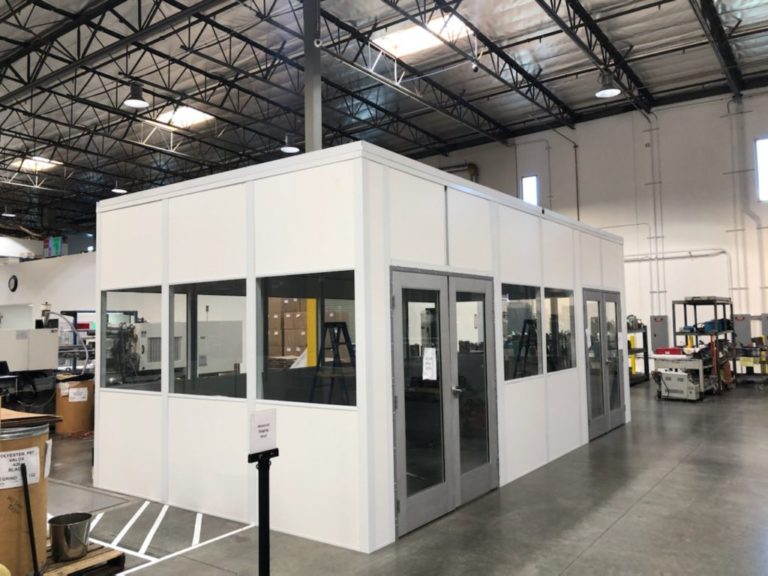In today’s fast-paced and ever-evolving world, the demand for cleanroom facilities has skyrocketed. These controlled environments, designed to minimize contamination and maintain specific air quality standards, are crucial in industries such as pharmaceuticals, biotechnology, electronics, and manufacturing. While constructing a traditional cleanroom can be expensive and time-consuming, there is a growing trend towards using shipping containers as an alternative. This article explores the cost effectiveness of using a shipping container as a cleanroom, examining the advantages, potential drawbacks, and frequently asked questions surrounding this innovative approach.
The Cost Effectiveness of Using a Shipping Container as a Cleanroom
When considering the cost effectiveness of utilizing a shipping container as a cleanroom, several factors come into play. Let’s explore how this unconventional solution can offer significant savings without compromising functionality or quality.
- Affordability: A Budget-Friendly Alternative
Shipping containers are widely available and relatively inexpensive compared to constructing a traditional cleanroom from scratch. These containers are built to withstand harsh environments during transportation, making them structurally robust and durable. By repurposing a shipping container, substantial cost savings can be achieved in terms of both material and labor.
- Rapid Deployment: Time Is Money
Setting up a conventional cleanroom involves intricate planning, design, and construction processes, often leading to substantial delays. In contrast, converting a shipping container into a cleanroom offers a quicker and more streamlined approach. With a pre-existing framework in place, modifications and installations can be completed with relative ease, allowing for a much faster deployment and reducing downtime.
- Mobility: Flexibility at Its Best
One of the remarkable advantages of utilizing a shipping container as a cleanroom is its inherent mobility. These containers can be transported and relocated without significant effort, offering businesses the flexibility to adapt to changing needs and environments. This feature is particularly beneficial for temporary cleanroom requirements or companies operating in multiple locations.
- Customization: Tailored to Specific Needs
Shipping containers provide a versatile foundation for cleanroom customization. From temperature control to air filtration systems, various modifications can be made to meet specific industry requirements. The ease of adapting shipping containers to accommodate different cleanroom classes, layouts, and equipment significantly reduces costs compared to constructing a cleanroom from scratch.
- Scalability: Grow as You Go
Businesses often face the challenge of scaling their cleanroom operations as demand increases. Shipping containers offer a scalable solution, enabling companies to add or remove units as necessary. This modular approach to cleanroom expansion allows for cost-effective growth without incurring substantial construction expenses.
Frequently Asked Questions (FAQs)
Can any shipping container be converted into a cleanroom?
Yes, with proper planning and modifications, most shipping containers can be transformed into functional cleanroom environments. However, it is essential to consult with experts to ensure compliance with industry standards and regulations.
Are there any limitations to using a shipping container as a cleanroom?
While shipping containers offer cost-effective cleanroom solutions, they do have some limitations. These include space constraints, limited ceiling height, and potential challenges in achieving optimal air circulation.
What are the cleanroom classes that shipping container conversions can achieve?
With the right modifications, shipping containers can meet various cleanroom classes, ranging from ISO Class 8 to ISO Class 5, depending on the industry requirements.
How long does it take to convert a shipping container into a cleanroom?
The conversion time
can vary depending on the complexity of the modifications required. However, compared to traditional cleanroom construction, the process is generally faster, with timelines ranging from a few weeks to a couple of months.
Are there any drawbacks to using a shipping container as a cleanroom?
While shipping container cleanrooms offer numerous advantages, it’s essential to consider potential drawbacks such as limited space for equipment and potential challenges in ensuring uniform airflow distribution.
What are the maintenance requirements for shipping container cleanrooms?
Maintenance requirements are similar to those of traditional cleanrooms and involve regular cleaning, filter replacement, and adherence to standard operating procedures to maintain optimal cleanliness and air quality.
Conclusion
The cost effectiveness of using a shipping container as a cleanroom cannot be understated. This innovative approach offers affordability, rapid deployment, mobility, customization, and scalability—all while meeting industry standards and regulations. By repurposing shipping containers, businesses can achieve substantial savings in both time and money, enabling them to allocate resources more efficiently.
However, it’s crucial to consider the limitations and potential challenges associated with shipping container cleanrooms. Space constraints, limited ceiling height, and airflow distribution issues should be carefully evaluated before committing to this solution. Consulting with cleanroom experts and professionals will ensure a seamless transition and optimal performance.
In a world where adaptability, cost savings, and efficiency are paramount, shipping container cleanrooms present an attractive option. If you’re interested in exploring this innovative approach further, contact KCH Cleanrooms today.
Contact KCH Cleanrooms for a consultation and discover how shipping container cleanrooms can benefit your business.





























